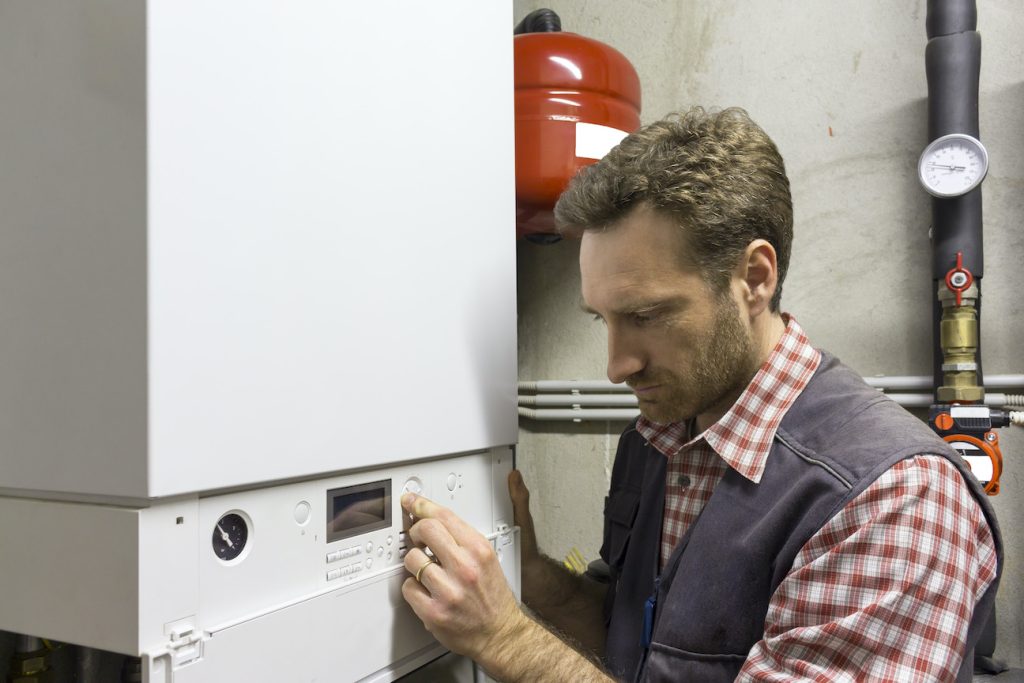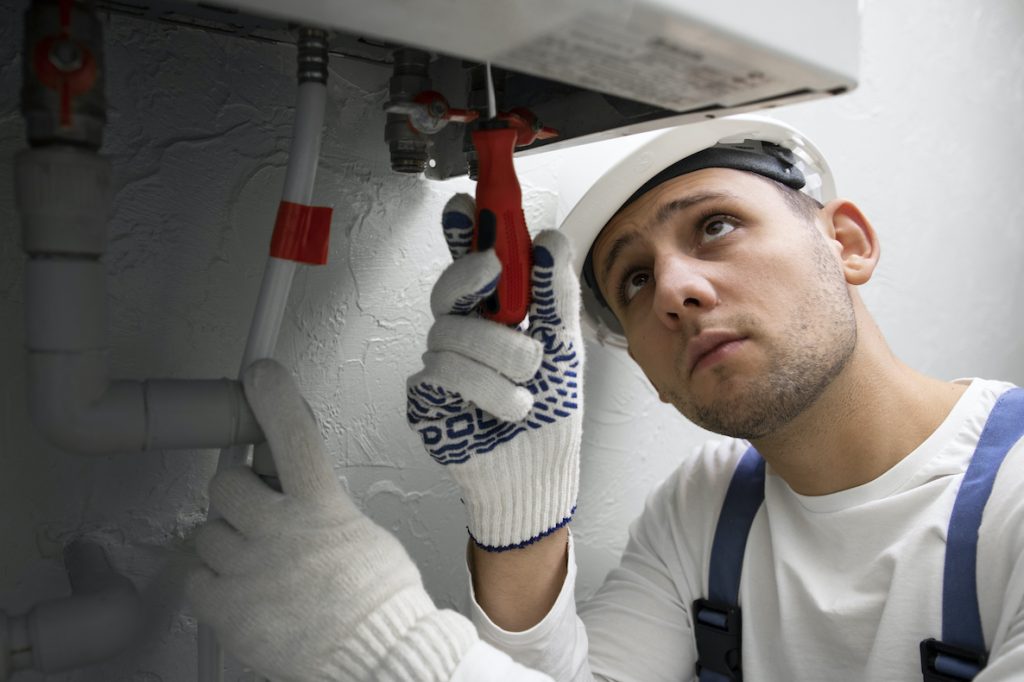Constant water pressure is essential to the efficient functioning of your boiler system. Pressure in most modern combi boilers is maintained by cold water flowing from the water mains supply through a filling loop. But what happens when this pressure drops?
Let Complheat’s handy blog help you to diagnose and hopefully resolve your low-pressure boiler issues.

A boiler losing pressure is a symptom of many issues that commonly arise with boilers. Most boilers today come with a built-in pressure gauge which makes a low-pressure boiler quite simple to identify. The pressure gauge is typically found on the front of your boiler and should be set around the 1 bar. The position is set when the boiler was initially installed and is sometimes shown by a red indicator needle.
There are several reasons why you may have a low-pressure boiler.
One of the most common causes is a leak somewhere in the combination boiler or the central heating system. You should look for any visible signs of a leak, and it may be useful to carefully check the pressure release pipe that goes from the boiler to the outside. If there is no visible leak, it could be in parts of the pipes covered by flooring or walls.
Places to check for leaks include:
– All radiator valves – just a small drip can make your boiler lose pressure over the course of a few hours
– Underneath your boiler for any puddles
– The safety discharge pipe work for leaking OUTSIDE the property
If you’re unable to find the visible leak, I would advise calling a gas safe registered engineer; all of the engineers on the Complheat team are Gas Safe Registered.
Alternatively, you may have a low-pressure boiler because the problem is inside the boiler itself such as a failing pressure release valve. This can be easily diagnosed if water is coming out of the discharge pipe.
Similarly, if you have bled your radiators recently, it’s possible that pressure was lost then. Check out our blog on successfully bleeding your radiators here. How to bleed your radiators

You may not be able to tell that you have a problem until you check the pressure gauge. A water leak, for instance, may be tiny and go unnoticed at first, only to develop into a larger problem later.
To stop the boiler from losing pressure, specific directions for its pressure system will be provided in the instructions manual. Check your manual to see if you can re-pressurise your boiler yourself by finding your system’s ‘fill valve’. If you do not know what you are turning under your boiler – then do not turn it!
Before re-pressurising your heating system please ensure that the heating system is off and has cooled down.
You may also want to check the rear of your boiler control panel, as these may come with similar instructions. However, it your boiler panel requires the use of tools before it can be removed, it’s better to let a gas safe engineer handle it.
Remember to always double check an engineer’s credentials before allowing them access to your low-pressure boiler, or any other gas work which needs repairing.
In most cases, you will not need to turn your water off if you have a low-pressure boiler. The only rare situation you will need to turn the mains water off is that the filling loop is left slightly on but will not turn off.
Important note: it’s bad for the boiler if you keep replacing the water. This could lead to other parts of the boiler needing to be replaced.
If you attempt to resolve your low-pressure boiler yourself and find that you need expert help instead, a gas-safe registered Complheat heating engineer is only a phone call away.
